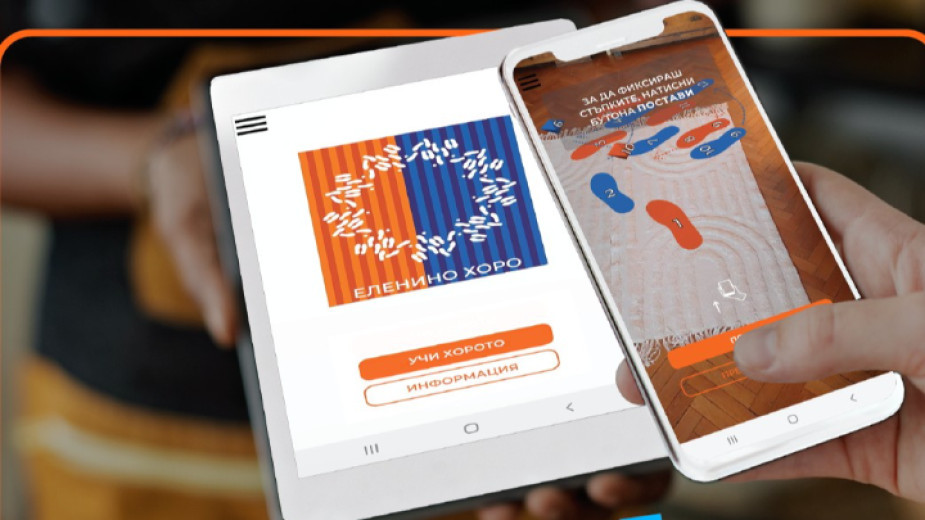Wherever you are in the world, as long as you have a smartphone and internet access, you can learn the intricate steps of the Bulgarian traditional horo dance. The new Taratanci game is free and it is based on augmented reality. "You just choose a choro, point your phone at the ground and follow the steps that appear on the floor on your phone screen," Ekaterina Petrova, co-founder of the Taratanci Foundation, told BNR-Stara Zagora in an interview.
"At the moment, we've uploaded four types of horo chain dance in the app̀ - Pravo horo, Graovsko, Raka and Elenino. It is active for android OS, but we will make the app available for download by users of other operating systems - Ms Petrova explains. The difference between Tataranci and other dance tutorials is the augmented reality - one can learn how to dance at home in the living room or in the park, for example. All you need to do is follow the steps. There are also voice commands to guide you. The game is a lot of fun and very creative."
It all started in 2014, when a handful of young Bulgarians decided to create a method for graphically depicting the steps of Bulgarian folk dances. Ekaterina Petrova remembers:
"Then someone had the idea to go to the nearest park and draw on the asphalt with chalk the steps of one of the easiest dances - the Chichovoto ("Uncle's horo"). We invited passers-by to try it and they began trying the steps, having great fun. So we decided to turn Taratantsi into an organization aimed at promoting Bulgarian folk dances in a new way."
Last summer, with the support of the National Culture Fund, the Taratantsi team embarked on a long journey through Bulgaria, visiting all the ethnographic regions. "We work with local choreographers and dance artists. They dip their feet in paint and as they dance they step on white patches, thus leaving footprints of the steps of the horo - Ekaterina Petrova says. - We travelled more than 7000 km across Bulgaria and took the footprints of another 80 horo dances. This way we already have a big database with footprints, which we are currently digitizing, and will be ready in a month. But we want to continue this work because there are an awful lot of Bulgarian horo dances - probably over 500, we don't know the exact number. And many of them are danced and known only by the older people in small hard-to-reach places. When these people are gone, the dance steps will be lost forever, if they are not documented for generations to come," Ekaterina Petrova concluded.
More about the magic of Bulgarian folk dances:
Compiled by Veneta Nikolova /based on an interview by Poli Guncheva from BNR- Stara Zagora/
English version: Elizabeth RadkovaBulgaria’s successes at international science Olympiads in 2024 can be seen in an exposition entitled “Fantastic minds”. Inaugurated to mark Awakeners” (Enlighteners”) Day, 1 November on Lovers’ Bridge near the National Palace of Culture in Sofia,..
Leading researchers and lecturers from the St. Kliment Ohridski University in Sofia and the Institute of Astronomy and National Astronomical Observatory of the Bulgarian Academy of Sciences will be paying a visit to the Museum of Natural History in..
The village of Oryahovitsa, Stara Zagora region, today celebrates its symbol - the walnut tree. There will be a Festival of the Walnut with a varied programme featuring the Kazanlahsko Nastroenie (Kazanlak Cheer) Orchestra, the soloist of..

+359 2 9336 661
